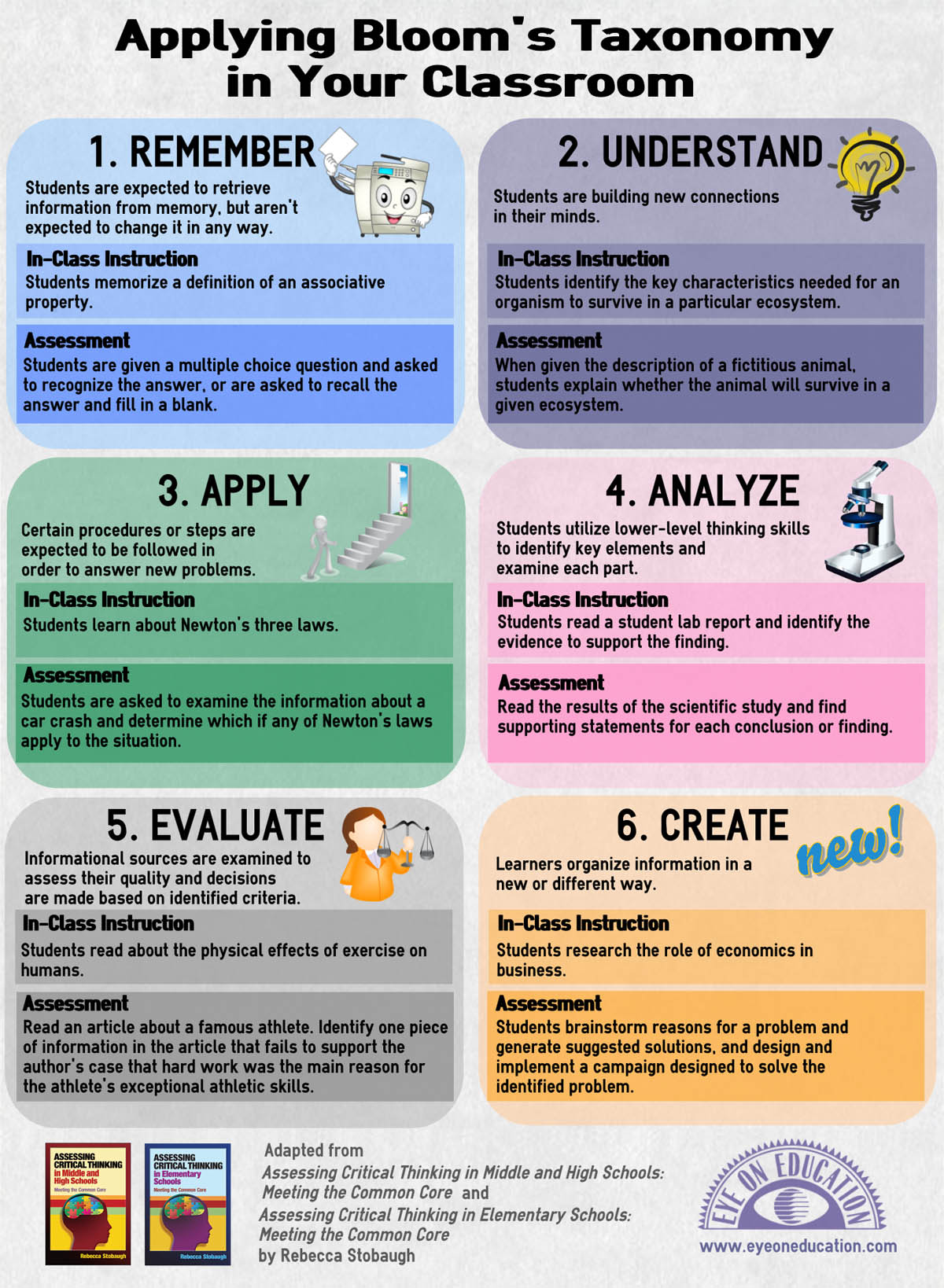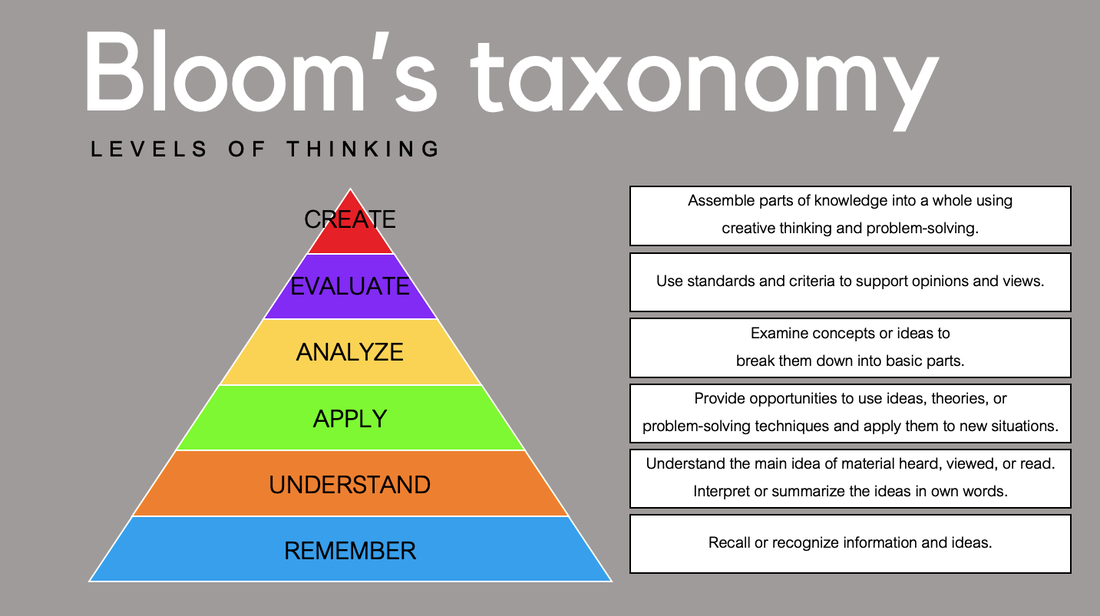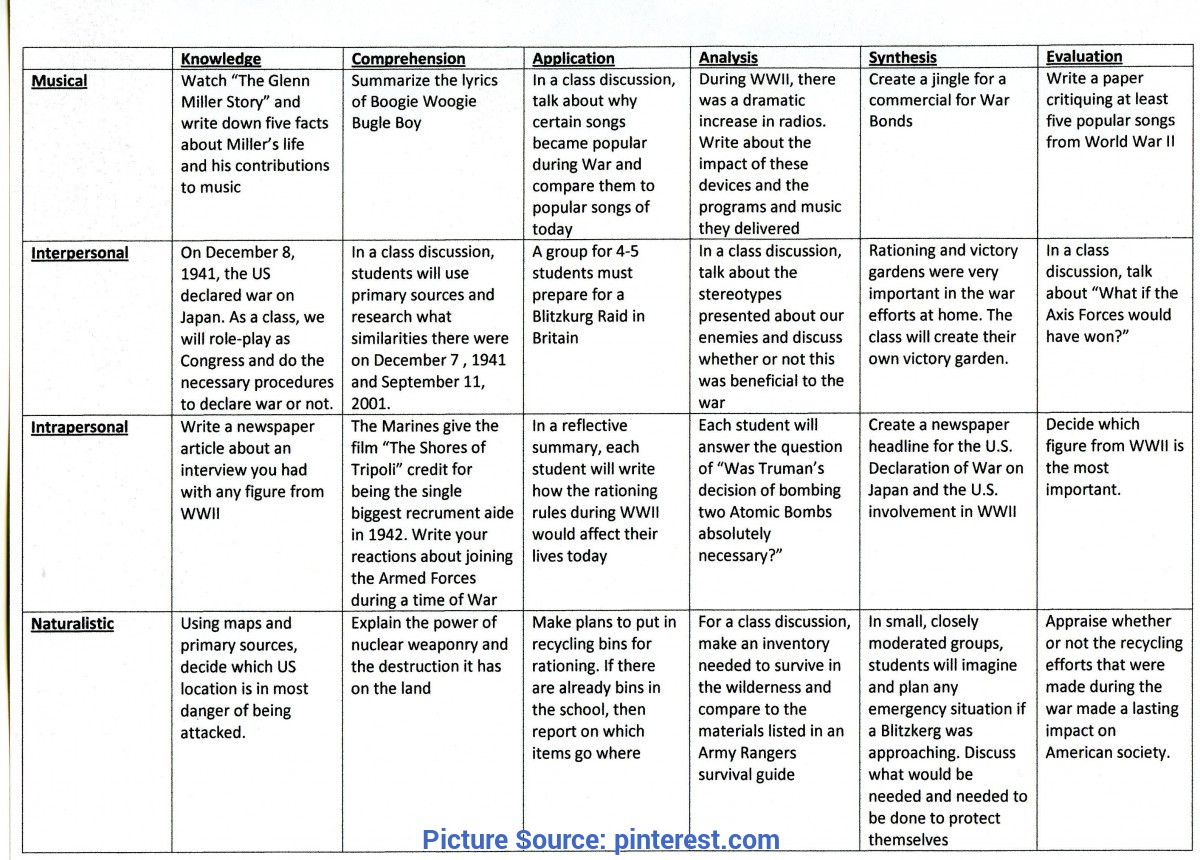Bloom S Taxonomy Lesson Plans Examples For Kindergarten WEB To simplify lesson planning divide the six levels of Bloom s Taxonomy into three sub sections Remember and Understand Apply and Analyze and Evaluate and Create When you plan instruction divide the learning activities of your lesson into three segments
WEB Normally represented in pyramid form the categories of Bloom s Taxonomy are remembering understanding applying analyzing evaluating and creating Bloom s Taxonomy can easily be overlooked for students in WEB May 20 2024 nbsp 0183 32 Bloom s Taxonomy explained with examples for educators Curious how Bloom s taxonomy comes to life in the classroom You re in luck We ve compiled a list of activities that align with each level and included specific Flocabulary features that make it a breeze to engage students and improve outcomes
Bloom S Taxonomy Lesson Plans Examples For Kindergarten
 Bloom S Taxonomy Lesson Plans Examples For Kindergarten
Bloom S Taxonomy Lesson Plans Examples For Kindergarten
https://www.teachthought.com/storage/2017/09/PostCopyDigitalBloomsVerbs-2-1.png
WEB Aug 13 2022 nbsp 0183 32 Level 1 Remember Objective to remember facts and simple concepts Verbs define duplicate list memorise repeat state Example learning aim Learners will be better able to list five new food vocabulary items Level 2 Understand Objective to explain ideas or concepts
Pre-crafted templates provide a time-saving solution for developing a diverse variety of files and files. These pre-designed formats and layouts can be used for different personal and expert projects, consisting of resumes, invitations, flyers, newsletters, reports, discussions, and more, improving the content production process.
Bloom S Taxonomy Lesson Plans Examples For Kindergarten

14 Brilliant Bloom s Taxonomy Posters For Teachers

How To Plan Using Bloom s Taxonomy Juicy English

Bloom s Taxonomy Lesson Plans Lesson Plans Learning

Bloom s Taxonomy Lesson Plan Template Fresh Blooms Questions For Each

Bloom s Taxonomy Teaching Learning Everything In Between

BLOOM S TAXONOMY Knowledge Is Power by Juan Flores Miguel Lima And

https://uwaterloo.ca/centre-for-teaching...
WEB Bloom s Taxonomy Cognitive Domain PDF Cognitive Domain intellectual skills and abilities required for learning thinking critically and problem solving Remember Retain recall and recognize knowledge

https://www.teachervision.com/teaching-strategies/...
WEB Feb 23 2024 nbsp 0183 32 Bloom s Taxonomy is a powerful tool in the K 12 classroom because it provides a structured approach to questioning that promotes higher levels of thinking Instead of focusing on rote memorization Bloom s Taxonomy encourages students to analyze evaluate and create

https://www.teachstarter.com/.../kindergarten
WEB Bloom s Taxonomy for 7th Grade Use this collection of Bloom s Taxonomy related teaching resources when working in your classroom within the Bloom s framework to promote higher order

https://innovativeteachingideas.com/blog/a...
WEB Aug 15 2023 nbsp 0183 32 Conveniently Bloom s Taxonomy provides lots of related verbs that provide a helpful way for educators to plan lessons Verb tables have been created to align with each of these levels Now let s take a look at

https://connectedtot.com/2020/07/08/lesson...
WEB Jul 8 2020 nbsp 0183 32 Here is a template that teachers can use to create their lessons amp online learning experience using the Bloom s Taxonomy model The cognitive process dimension table credits There are two lesson plans for teaching Area and Prime Numbers that I created using Bloom s Taxonomy
WEB Bloom s Taxonomy is a powerful teaching and learning tool Here are 50 specific ways to use Bloom s Taxonomy in the classroom WEB May 15 2024 nbsp 0183 32 Learn how Bloom s taxonomy can aid in active learning Plus download the guide to the six levels of thinking amp how to apply them in a lesson plan
WEB The video begins with a quick overview of the Cognitive Domain references the Bloom s Wheel which helps frame the concept and provides many of the aforementioned lesson planning verbs and suggests a three step sequence for creating lesson objectives based on Bloom s Taxonomy